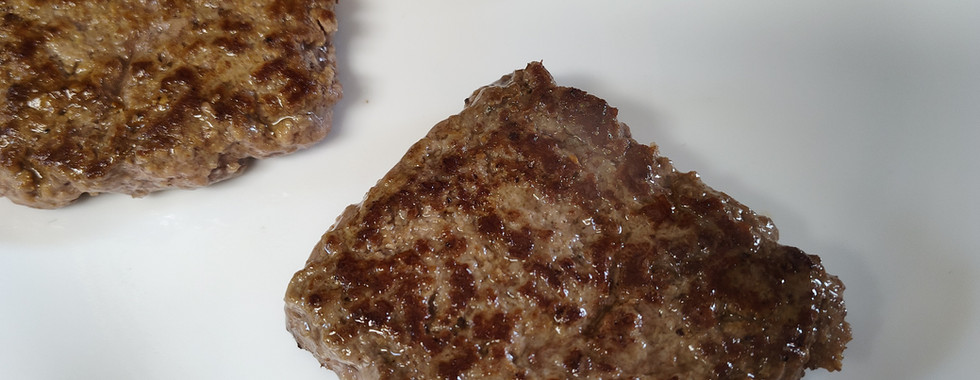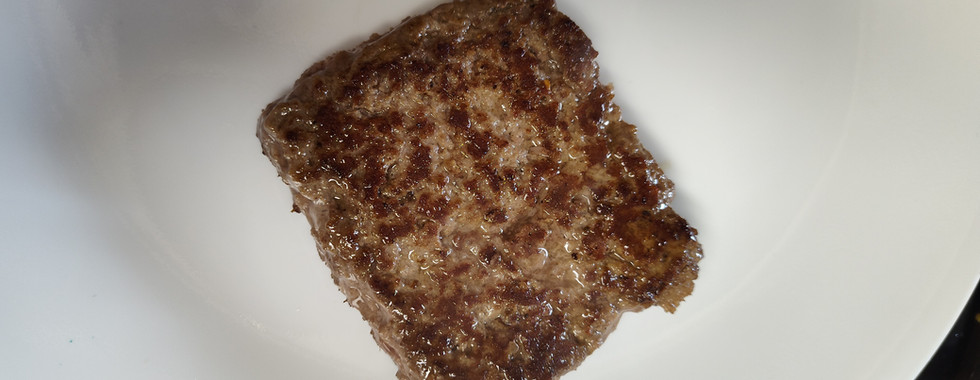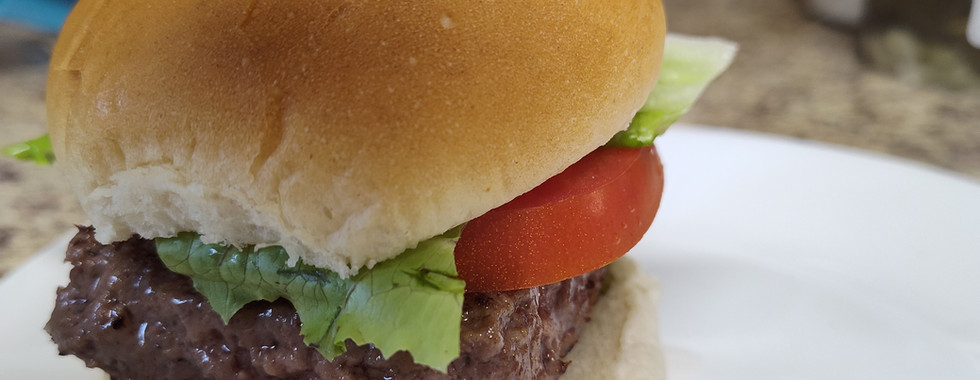
The story of Kewpee Hotel Hamburgs started for the Castle Test Kitchen with a Facebook message from friend of the Museum, author Gary Flinn, whose recent book, Kewpee Hamburgers: A Mity Nice History was just published. The book—a nice read on the history of Kewpee restaurants, founded in Flint, Michigan in 1923—was immediately ordered, and devoured, by Test Kitchen staff. Flinn’s Facebook message left us pondering an interesting question, however, what was the history of Kewpee in Saginaw?
Flinn's book only mentioned one Saginaw location at 413 Federal Avenue, just down from the Castle Station post office, as part of an appendix—mostly a list of other Kewpee locations with little to no additional information. What became a cursory search on our part to help Flinn flesh out his knowledge of Saginaw’s Kewpee history, has led to the following several weeks' worth of recipe blogs on the topic and its hamburger successors in Saginaw. We hope you and Flinn appreciate our deep dive into the grease trap of Saginaw hamburg history.
Turning Stomachs
To start on the Kewpee Era, we must first turn to the unsavory side of ground meat. Though hamburgers are common fair by today’s American fast-food standards, there was a point during the early 20th century when meat was highly suspect for being tainted with disease such as bovine tuberculosis, rot, or contaminants. Ground meat, in particular, was looked down upon by anyone who could afford better because of the ease in which the previous maladies were hidden during the grinding process before sale to the unknowing public.
Most famously, journalist Upon Sinclair exposed these problems and more with The Jungle, his expose on labor in the meat-packing industry in Chicago, which caused federal action to be taken to regulate the food, drug, and meat industries. The federal Meat Inspection Act was passed in 1906, but many continued to look upon ground meat with skepticism. Shortly after this point, the first “fast food” restaurant chains sprang up, beginning with White Castle in 1921, which put the spotlight on ground meat and made it palatable to most Americans.
Kewpee Hotel Hamburgs came about shortly after the meat purity concerns were fleshed out in American papers and politics, though it followed many of the same standards setup by the White Castle system to compensate for the bad taste left by ground meat for Americans—sparkling white walls, buildings and uniforms to evoke the look of high sanitary standards and a simple menu, including hamburgs made from meat freshly ground on site. All this with the added cutesy-creepy element of the (then popular) Kewpie Doll mascot to draw in the customers.
We know that Saginaw was experiencing other concerns over food safety at the beginning of the twentieth century, such as Caroline Magoffin Humphrey’s interest in Pure Milk, (which we examined in this earlier blog post), so it comes as no surprise that it would shortly thereafter embrace the little white Kewpee Hotel restaurants that touted clean environments and fresh hamburgs.
Turning Hamburgs
Without focusing too much on Kewpee’s founding in Flint by Samuel V. Blair—we recommend you pick up a copy of Gary Flinn’s book for all the details—we will instead turn to Saginaw’s own Kewpee locations—and yes, there was more than one.
The first location was 413 Federal Avenue, just a half block west of the Castle Building, on the north side of Federal Avenue between Baum and Jefferson. While we were unable to locate a good picture of this Kewpee, advertisements from The Saginaw Daily News and Sanborn fire maps indicate it made its appearance around 1927, wedged between two much larger buildings, it followed the same Kewpee Hotel look of Blair’s earlier incarnations—a very small building (or shack) with ample parking—and no “hotel” to be seen. This circa 1930s aerial photo shows the little building from afar. Its location near East Saginaw’s downtown, not to mention a bustling post office, made good business sense.
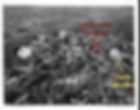

By 1930, Saginaw Daily News advertisements mentioned a second location at River Road and 18th Street. This area has since been reconfigured, but Sanborn maps show the tiny building’s placement. A 1930 road commission report also offers a rare, though slightly blurry, glimpse at this Kewpee Hotel.

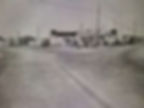

A third location, 209 N. Jefferson, also appears in advertising. An advertisement from 1936 notes that Eddie Loeblein was opening “The Tasty Hamburg” at this location, formerly the Kewpee Hotel.
“Hamburg-Pickle-on-Top-Makes-Your-Heart-go-Flippity-Flop”
And thus, we turn to the main reason behind the Kewpee Hotel, the humble hamburg, and this week’s recipe.

The Recipe: The Traditional Kewpee Burger (CTK Version)

Each Kewpee location, a part of a loose franchise, was allowed to have its own items in addition to the standard hamburg, coffee and soda. For some this included beer (after prohibition was lifted), and for the Saginaw locations, this included “Genuine Mexican Chili” at one point. Next week we will investigate other local favorites and what became of Saginaw’s Kewpee Hotels.
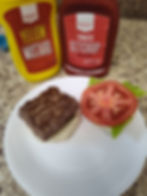
Ingredients:
1 lb. freshly ground beef
4 plain split top hamburger buns
Toppings of your choice
Directions:
Using quality ground beef will make a better-tasting burger. In the interest of accuracy, this recipe tester abided by the ingredients list, but one would not be remiss to add a dash of Worcestershire.
Portion about 1/4 lb. of ground beef and shape into a square. The recipe tester had to ad-lib here. Two methods were attempted. The first, possibly most practical for making a small number of burgers, was to shape the burger into a round patty and then pressing the sides in until squared off. The second method was to make a round patty and use a knife to trim to square. This gave the burger a cleaner square shape, however, it also led to waste.
A third option, if making a substantial number, would be to purchase a square cookie cutter, roll out the ground beef, and then use the cutter to portion the burgers. Alas, the recipe tester did not own a square cookie cutter. She did briefly consider making burger snowmen, but then that would vere wildly from the Kewpie shape.
There are not standard fixings for a Kewpie burger, and you can't go wrong with the classics (plus garden tomatoes are really coming in right now so they must be used in all things!). A little lettuce, tomato, pickle, ketchup and mustard and it was delicious. Perhaps the shape really did make it tastier.


